Learn to make an herbal tea, infusion, and decoction correctly so you can extract all the beneficial medicinal qualities from herbs for herbal remedies and even for DIY projects and crafts.
Making herbal tea, infusions, and decoctions are the first preparations new herbalists learn when they begin using fresh and dried herbs from their gardens. Herbal teas are easy to make at home. You are probably already making herbal tea, like peppermint, chamomile, or ginger for digestive aids and sleep aids. Herbal infusions and herbal decoctions go a step further and extract more herbal benefits from medicinal herbs that you harvest from your herb garden.
Learn to make herbal tea, herbal infusions, and herbal decoctions correctly so that you can extract the amazing therapeutic benefits from medicinal herbs.
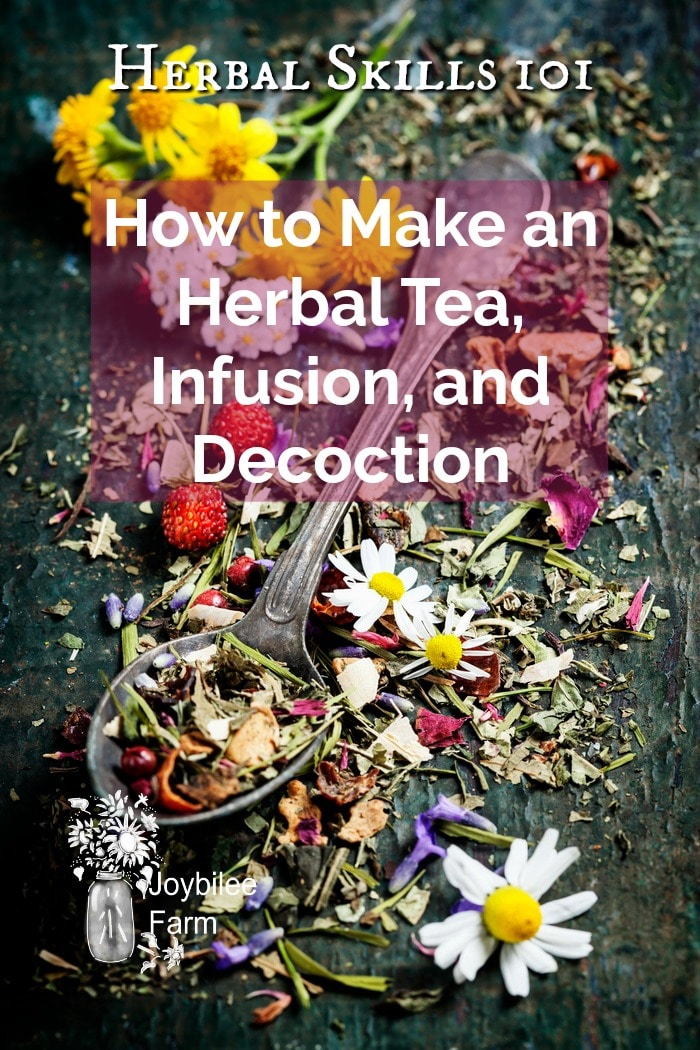
Tea and Tisane
Tea is made with a short infusion time of up to 15 minutes that extracts the flavonoids from the herbs but leaves a lot of the minerals behind. Herbal tea is technically a ‘tisane’ since it is not brewed from the traditional tea leaves of the Camellia sinensis plant. I will still use the term “tea” in the articles on this website as I discuss the ways to make an herbal tea, herbal decoction, and herbal infusion, since that is the standard lay nomenclature.
The herb-to-water ratio when preparing tea is one tablespoon dried herb to one cup of water. Learn more about making your own tea blends in our article – 30 Best Herbs for Tea and the Secret Sauce for Better Tea Blends has instructions for making custom tea blends.
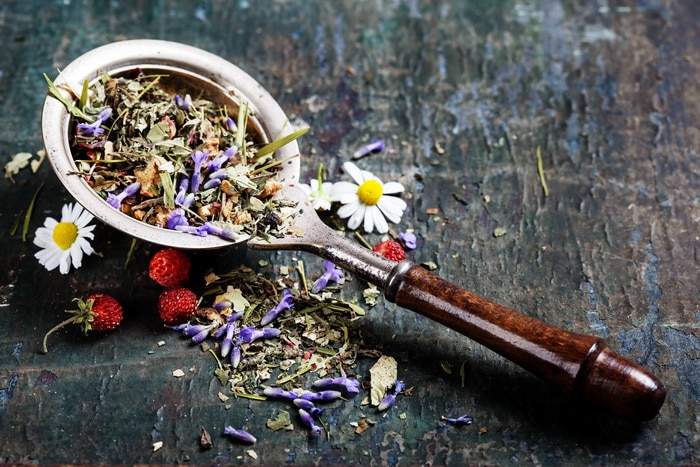
Infusion
An herbal infusion can be thought of as the next step in the process of extracting nutrients and healing properties from herbs. It’s useful for seeds, flowers, leaves, and stems and is as simple as brewing a pot of tea and leaving it to steep for a long time. When you brew herbs with a long infusion of 4 to 8 hours, more of the minerals have a chance to be extracted into the liquid. This leaves the minerals in the infusion ready to be assimilated when you drink it.
Herbalists find it helpful to make infusions in large batches of up to a quart, so they can be used over the course of a day. Use one ounce of dried herbs per quart of water when making an herbal infusion, using this method. Since herbal infusions are rich in flavonoids and minerals that can contribute to spoilage, herbal infusions should be refrigerated once the infusion is prepared, and the liquid comes to room temperature.
You can use fresh or dried herbs to make an infusion, but if using fresh, double the amount you would use of dried. The water content of fresh herbs makes them less potent, by weight, than dried herbs.
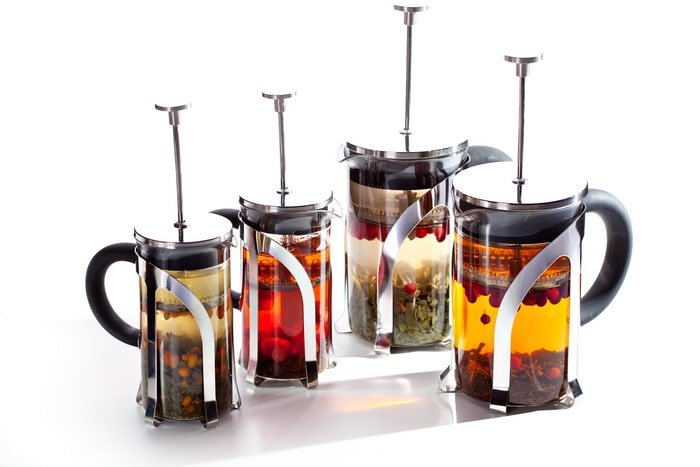
Decoction
Herbal properties are extracted from coarse herbs by the decoction method. These heavier plant parts require a constant and prolonged heat to soften them and extract their healing properties.
A decoction is made by simmering herbs in water and is the most effective way to draw the healing elements from hard plant parts such as bark, roots, stems and heavy leaves. It’s important to cover the pot while it’s simmering to hold in any aromatic oils and prevent them from evaporating out of your decoction.
To make a decoction, use the same proportion of herbs and water as you would use to make an infusion – 1 ounce of dried herb to quart of water. It is helpful to grind, crush, or cut the whole root, bark, and seeds before preparing the decoction. This allows more surface area for the herbs to release their properties.
Some Basic Rules:
- Use the best water – Use spring water or distilled water. Even filtered water from your refrigerator door is better than chlorinated water from the tap.
- Use glass or ceramic containers – Metals like aluminum or tin will leach into the tea, so they are not the best choice. If you must use metal choose copper or stainless steel. If you have the option of ceramic coated pans, those work well, too. An iron tea pot will leach iron into your tea, when acidic herbs are used.
- Use a lid when boiling – This will keep the herbal properties in your decoction.
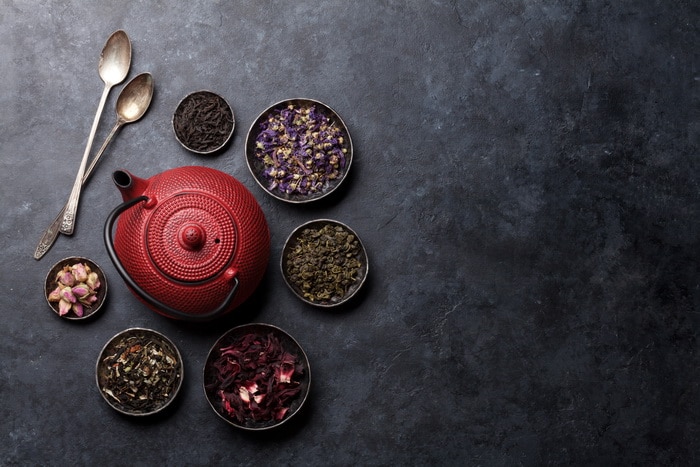
To make an herbal decoction:
Add the dried herbs and cold filtered water to a medium-size simmering pot. It should be big enough to hold the ingredients.
Bring it to a simmer over medium heat. Keep the water just below boiling for about 30 minutes and let the herbs simmer gently until about 50% of the water has evaporated. Some treatments may require heating for up to one hour, but 30 minutes is the general rule. Keep a lid on the pot to prevent any aromatic oils from being lost. If you can smell the aroma of the herbs, you are letting the essential oils escape into the air.
Once finished, remove the decoction from the heat and strain out the herbs using a filter. You can often simmer the herbs for a second time to make another batch. Use it full strength or dilute it for your remedies. Once cooled, the preparation will last in the refrigerator for up to three days. Discard it if you notice bubbles forming which indicates fermentation.
Making a strong decoction
Alternatively, when smaller woody pieces are used, yet a stronger remedy is required, the decoction is prepared as above (boiling for 30 min), then it is allowed to sit overnight before straining out the herb. When straining, be sure to press the cut herb pieces into the strainer to get as much moisture out of the herb pieces (Taylor, 2005). [source]
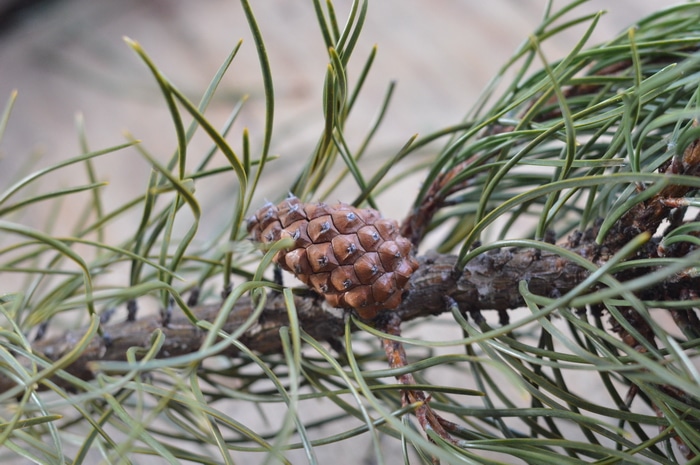
Common Herbs that are best extracted by the decoction method
- astragalus
- chicory
- cinnamon
- elderberry
- burdock
- hawthorn
- dandelion root
- echinacea root
- pine needles
- ginger root
- rosehips
- willow bark
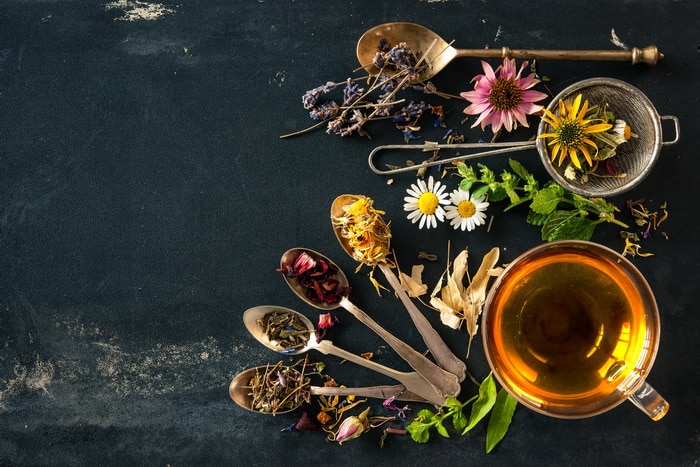
Ways to use a decoction
To drink, take a teacup or similar size glass 3 times a day. This can be heated or cold. Honey or sugar may be used to sweeten the drink or add some lemon juice.
Decoctions are useful additions when making syrups and oxymels, adding herbal properties to preparations that are either sweet or sour. In fact, when using some of the most bitter herbs this may be the best way to disguise their taste in something easier to take.
They are also used in soap making to bring the healing properties of herbs to use for your skin. Decoctions are also used in lotion making, but be sure to add a germicide to prevent premature spoilage.
Your Turn
How have you used tea, infusions and decoctions in your herbal medicine making and recipes?



Leave a Reply